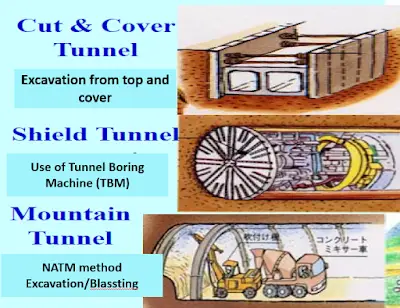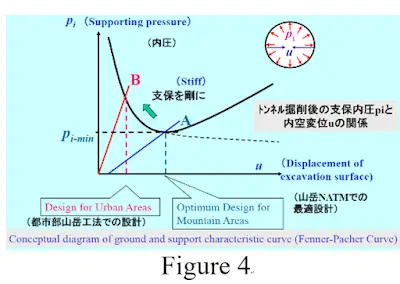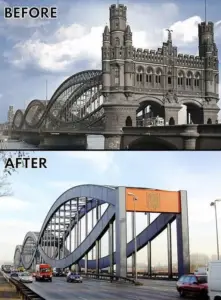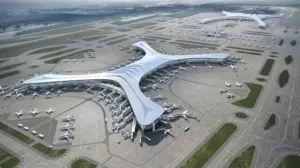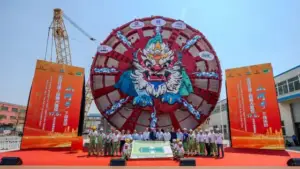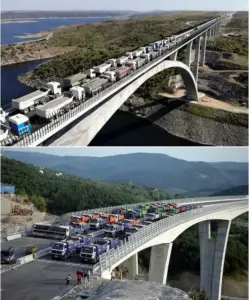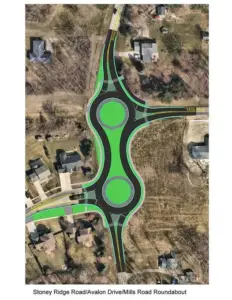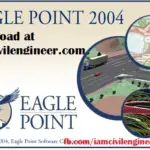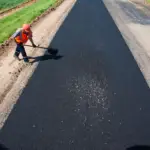Saad Iqbal | 🗓️Modified: March 28, 2017 | ⏳Read Time: 3 min | 👁Post Views: 633
Tunnels and their stability mechanisms
Introduction
Tunnels can be defined as underground construction for the connection between two destinations to build up an effective means of transportation. Tunnels are made for various purposes such as Railway transportation, for highways, for water supply and for communication cables etc. Tunnel construction has several benefits e.g. less disturbances to surrounding environment and reduced communication distances which results in saving of energy and resources.
What’s a Tunnel Made of?
Tunnel is underground passage constructed through the ground which may be consists of rock or different type of soils. Construction process involves excavation, ground temporary support system and muck removal, erection of permanent support such as lining and provision of other facilities which are required for smooth operations. So one can say that tunnel is made of rock or soil which is supported by permanent supports such as lining to provide adequate stiffness and support to structure against damage and collapse. Various methods based on geological, environmental and economic conditions etc. are available for tunnel construction. New Austrian Tunneling method (NATM), Shield Tunnel method and Cut & Cover method are the famous method of tunnel construction.
Mechanism of Tunnel Stability in the Ground
Tunnel is a thin walled closed excavated cross section and according to peck’s theory, tunnel get stability in a ground through deformation of its shape and/or support from surrounding ground makes it stable (Fig.1). After excavation a loosened zone is created and stress redistributes outside the loosened zone due the formation of ground arch (Fig.2), only few part of ground which is present in loosened zone, imparts load on the support or lining because of this arch action. Trapdoor experiment (Laboratory experiment) reveals this stress redistribution phenomenon. Figure 3 shows that ground will deform upon loading in order to attain stability. This is important to realize that if tunnel supporting pressure will be less, than tunnel will deform more so in case of urban area tunneling, strong lining is required. Fenner-Pacher curve can also be seen to understand the ground stability which explains relationship between supporting pressure and displacement of excavated surface (Fig. 4).

